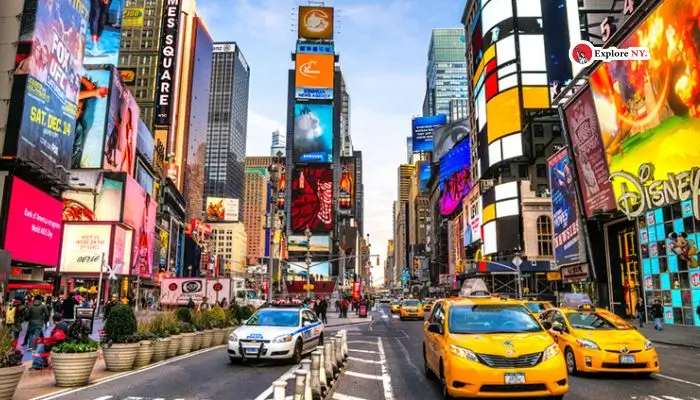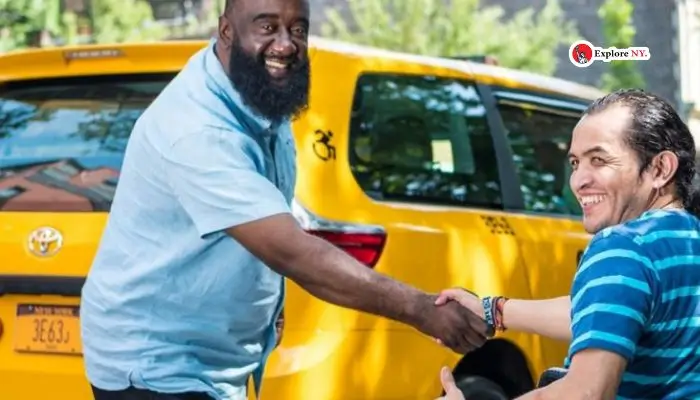Exploring New York City can be an exciting yet daunting task for tourists. The best way to get around NYC as a tourist is by using the city’s extensive and affordable public transport system. The Metropolitan Transportation Authority (MTA) runs the subways and buses, offering 24-hour service throughout all five boroughs, which makes it a reliable choice for visitors.
Walking is another excellent way to experience the city, especially in areas like Times Square, Central Park, and the Brooklyn Bridge. Comfortable shoes are a must since many tourists find themselves walking between 15,000-20,000 steps a day. This not only helps save money but also allows travelers to immerse themselves in the vibrant street life and iconic landmarks.
For those days when the weather isn’t ideal, or the distance is too great, ride-sharing apps and taxis are readily available. Biking is also gaining popularity, with numerous bike rental stations scattered throughout the city. Each mode of transport offers a unique way to see and experience the diverse neighborhoods and cultural hotspots New York has to offer.
Public Transportation Options

Getting around New York City as a tourist is easiest using public transportation. This includes the MTA’s subway and buses, as well as commuter rails for traveling to the surrounding areas.
Understanding the MTA
The Metropolitan Transportation Authority (MTA) runs New York City’s public transit system, including subways, buses, and commuter rails. Information about schedules, maps, and fares can be found on the MTA website or by calling their customer service. They’re a reliable way to travel and cover a vast area, making it convenient for tourists.
Navigating the Subway
The subway is the backbone of the city’s transit system with 36 lines serving 472 stations. A single ride costs $2.75, while a seven-day pass is $33. This is useful for tourists planning an extended stay. Trains run around every 2-5 minutes during peak hours and every 5-15 minutes at other times. Make sure to hold onto your subway card, as it costs $1 to get a replacement.
Buses for Short Distances
Buses are a good choice for shorter distances, especially if you’re looking to avoid subway stairs. The city operates 5,725 buses serving various routes. Fares are the same as subway rides at $2.75 and transfers between buses or from bus to subway are free within a two-hour period. Late at night, buses may stop upon request if it’s safe to do so.
Commuter Rails for Greater NY
For travel outside of NYC, the MTA also operates commuter rails. Two of the main ones are the Long Island Rail Road (LIRR) and Metro-North Railroad. These rails are ideal for day trips to places like the Hamptons or upstate New York. Ticket prices vary based on the destination, with higher costs for longer distances. Information on schedules and fares is available on the MTA website.
Taxi, Ride-Sharing, and Car Services

When visiting New York City, getting around can be made easier with a variety of transportation options. Yellow cabs are a classic way to travel, while ride-sharing services like Uber and Lyft offer convenience and modern features.
Hailing a Yellow Cab
Yellow cabs are iconic in New York City and can be found on most streets. Simply raise your hand to signal an available taxi. Look for a cab with its roof light on; that means it’s available.
Expect to pay around $40 plus tip for a ride from the airport to the city. Taxis accept both cash and credit cards, making payment convenient. They can be a bit slower during rush hour due to traffic, so plan accordingly.
Tips for Using Uber and Lyft
Ride-sharing apps like Uber and Lyft are popular for their ease of use. Download the app on your smartphone, set your pickup location, and request a ride. You can see the estimated fare before booking and choose between various vehicle types.
Prices can fluctuate due to demand, so it’s wise to check multiple apps to get the best rate. Uber and Lyft also offer ride options like UberPOOL and Lyft Line, which allow you to share a ride with others for a cheaper fare.
For airport rides, both Uber and Lyft pick up passengers at designated zones, usually marked by signs. Remember to double-check the car’s license plate and driver details for safety.
Alternative Transportation

Visitors to New York City have multiple ways to get around without using the subway. Bikes can be rented from a wide network of stations, walking offers a great way to explore various neighborhoods, and ferries provide scenic travel options along the rivers.
Citi Bike Sharing Program
The Citi Bike Sharing Program offers a popular alternative to traditional public transport. With over 1,500 stations and 20,000 bikes distributed across the city, tourists can easily find a bike nearby. Riders can choose daily or annual passes for unlimited 30-minute trips.
The bikes come with features like adjustable seats and baskets. Renting a bike allows tourists to see the city’s landmarks while avoiding traffic congestion. For those concerned about safety, Citi Bike stations are placed in well-lit and busy areas. Helmets can be rented from nearby shops for extra protection.
For more details, Citi Bike’s official website and app provide real-time information on bike availability and docking stations.
Walking for Neighborhood Exploration
Walking remains one of the best ways to truly experience New York City’s diverse neighborhoods. From the historic streets of Greenwich Village to the bustling shops of SoHo, each area offers unique sights and sounds.
Tourists can walk across famous spots like the Brooklyn Bridge, marvel at the architecture, and take in the skyline views. The city is designed with wide sidewalks, making it pedestrian-friendly. Walking also allows for spontaneous discoveries, like quaint cafes or street performers.
Maps and apps like Google Maps can guide visitors, providing information on nearby attractions, dining options, and restrooms. Carrying a water bottle and wearing comfortable shoes will make the walking experience more enjoyable.
Ferries Along the East and Hudson Rivers
Ferries provide a scenic and efficient way to travel along the East and Hudson Rivers. Operated by NYC Ferry, these boats connect various parts of the city, including Manhattan, Brooklyn, Queens, and the Bronx.
Ferries offer stunning views of the city’s skyline and landmarks like the Statue of Liberty. Tickets are affordable, and routes operate frequently, making them a convenient option for tourists. The ferry terminals are equipped with amenities such as waiting areas, restrooms, and food vendors, enhancing the travel experience.
Using ferries allows tourists to avoid congested roads and enjoy a different perspective of New York City. Information on schedules and routes is available on the NYC Ferry website and app.
Accessibility and Tips

New York City offers several services for riders with disabilities and implementing some simple safety tips and etiquette can make your travel experience smoother.
Services for Riders with Disabilities
NYC has a range of accessibility options. The city’s paratransit system, Access-a-Ride, provides door-to-door service. Visitors can use temporary reciprocal access by calling 877-337-2017.
The MTA subway system is working to improve accessibility. Many stations have elevators, ramps, and other features. Real-time updates on elevator status can be found on the MTA website. Additionally, buses are equipped with wheelchair lifts and designated seating.
Top attractions like the Statue of Liberty, museums, and parks are wheelchair accessible. Even helicopter tours and cruises accommodate special needs, ensuring everyone can enjoy NYC sights.
Safety Tips and Etiquette
Wearing comfortable shoes is essential as visitors often walk 15,000-20,000 steps per day. Be sure to wear supportive shoes to avoid discomfort.
Stay aware of your surroundings and keep personal belongings secure. Use crosswalks and obey traffic signals, as the city can be busy. Always stay vigilant, especially in crowded areas like Times Square.
When using public transit, give priority to seniors, people with disabilities, and parents with strollers. Stand on the right on escalators to allow others to pass on the left.
Lastly, familiarize yourself with the subway map and download a transit app. This will help you navigate the system more efficiently and save time during your visit.
Frequently Asked Questions
What are the most cost-effective transportation options for tourists in New York City?
Public transportation, including subways and buses, is the most cost-effective way to travel. With a MetroCard, tourists can easily access New York’s extensive subway system and bus routes. Walking is another great option, as many attractions are within a manageable distance.
Can visitors purchase a subway pass specifically for tourists in NYC?
Yes, tourists can buy a 7-Day Unlimited Ride MetroCard. This pass allows unlimited subway and bus rides for a week, making it a convenient choice for travelers who plan to explore the city extensively.
What are the best practices for navigating the NYC subway system?
It’s important to download a subway map or use an app like Google Maps for real-time navigation. Always pay attention to the signs and announcements for train directions and stops. Peak hours can be very crowded, so plan your trips accordingly.
Is using the subway the cheapest option when traveling from NYC airports?
Yes, the subway is generally the cheapest option to get from JFK and LaGuardia airports to the city center. From JFK, you can take the AirTrain to a subway station, and from LaGuardia, buses connect to subway lines. This method is economical but may take longer than other options.
How does the public transport pass work for visitors in New York City?
Visitors can use a MetroCard to access subways and buses. The card can be loaded with either pay-per-ride credit or unlimited ride options for a set period. It offers unlimited transfers between buses and subways within a two-hour window.
Are taxis or subways more economical for getting around NYC?
Subways are typically more economical than taxis for getting around the city. While taxis can be convenient, especially late at night or when traveling with luggage, they are more expensive and can be affected by traffic. Subways offer a fixed cost and often faster travel times during peak hours.




